Table of Contents
Whether you live in a wildfire hazard severity zone (FHSZ), a FEMA flood zone, or a hurricane evacuation zone, home hardening can help protect your property from significant damage during natural disasters. According to environmental lawyer and director of Rice University’s SSPEED Center Jim Blackburn in an article for Houston Public Media, “20% [to] 25% of the city of Houston is in an evacuation zone.” As such, this post will focus on home hardening tips for hurricane season in Houston – where our flagship studio is located and many of our clients live. From reinforcing windows and doors to elevating electrical systems, here’s how to better protect your Houston home against hurricanes.
What is Home Hardening?
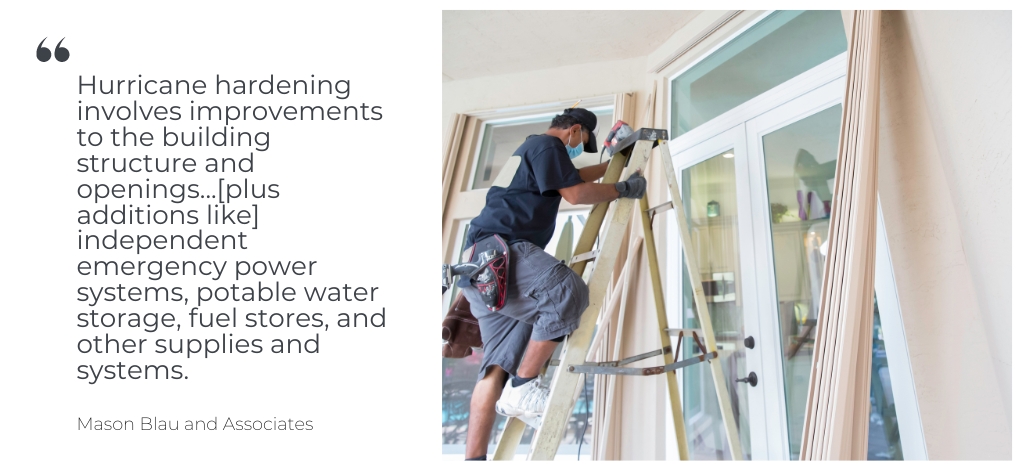
Home hardening is the process of making your home more resilient to flooding, high winds, flying debris, and other severe weather during hurricanes, wildfires, and storm surges. The primary goal of home hardening is to strengthen the structure and improve its ability to withstand the forces and hazards associated with these events – thereby reducing damage and protecting residents.
Home hardening measures are generally implemented post-construction during renovation and remodeling. However, the recent increase in extreme weather events has led many builders, architects, designers, and homeowners to prioritize disaster resilience during the initial planning phases of new construction. Below are a few examples of home hardening measures for properties in hurricane, earthquake, flood, wildfire, and tornado risk zones.
Hurricane and Flood Home Hardening Measures
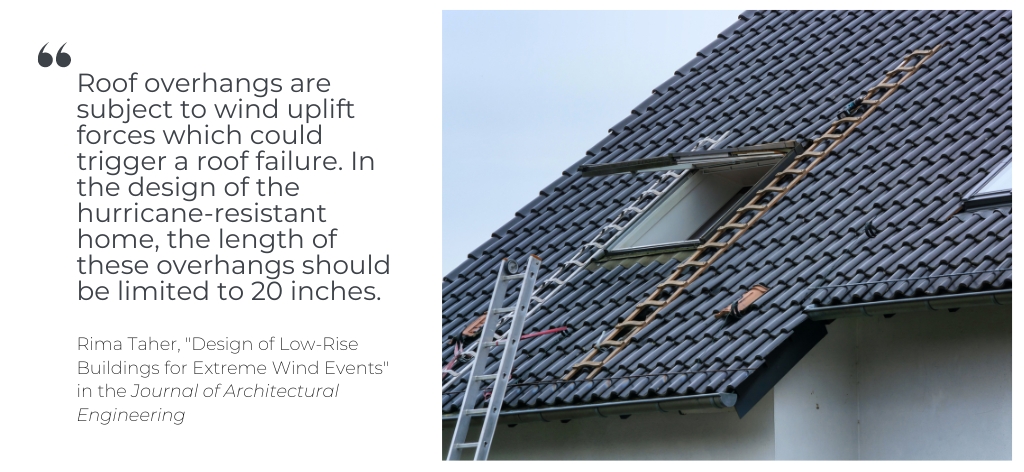
- Reinforce the roof with hurricane straps or clips.
- Install impact-resistant windows and doors or add storm shutters.
- Secure garage doors to withstand high winds.
- Trim trees and shrubs around the property to prevent branches from detaching and impacting the home.
- Elevate electrical systems and either raise or relocate mechanical systems above flood levels to prevent water damage and danger to residents.
- Select wind and water-resistant building materials like steel and concrete.
- Seal gaps around doors and windows to prevent water infiltration.
- Install sump pumps and French drains to manage excess water that gathers during floods.
Earthquake Home Hardening Measures
- Anchor heavy furniture like china cabinets and appliances to the walls so they do not tip during an earthquake.
- Retrofit the foundation to make it more resistant during ground movement.
- Use flexible utility connections to prevent gas and water leaks.
- Install automatic gas shut-off valves to prevent fires.
- Reinforce walls and chimneys to prevent collapse when the ground moves.
Wildfire Home Hardening Measures
- Select fire-resistant roofing and other building materials.
- Create defensible space around the home by clearing flammable vegetation and following all abatement requirements set by your city.
- Install non-combustible siding.
- Enclose eaves to prevent embers from catching them on fire.
- Opt for tempered or double-paned glass windows to reduce the risk of shattering from heat.
Tornado Home Hardening Measures
- Install a tornado safe room or shelter in the home.
- Reinforce walls, roofs, and connections with bracing and other elements to resist strong winds.
- Securely anchor outdoor structures and furniture like sheds and fences.
Which Types of Homes Are Least Susceptible to Damage During Hurricanes?
If building a new home in Houston or a hurricane evacuation zone elsewhere in the U.S., you might consider architecture designed to resist gale force winds, flying debris, and storm surges. In a 2007 paper for the New Jersey Institute of Technology, civil engineer Rima Taher, PhD describes key architectural features of hurricane-resistant homes.
According to Taher, homes with the best chance of surviving a hurricane relatively unscathed are square or geodesic dome homes with multiple roof slopes, short eaves, and elevated ground floors. If elevated, lower levels are less likely to suffer flood damage. With short eaves and multiple slopes, the roof is less likely to fail.
As Taher writes in the paper, “structural failure [during a hurricane] is often progressive.” Securing and reinforcing each segment of the home is essential to protecting it from damage. In terms of materials, the following typically perform better during hurricanes.
Hurricane-Resistant Building Materials for Houston Homes
Reinforced Concrete and Insulated Concrete Forms (ICF)
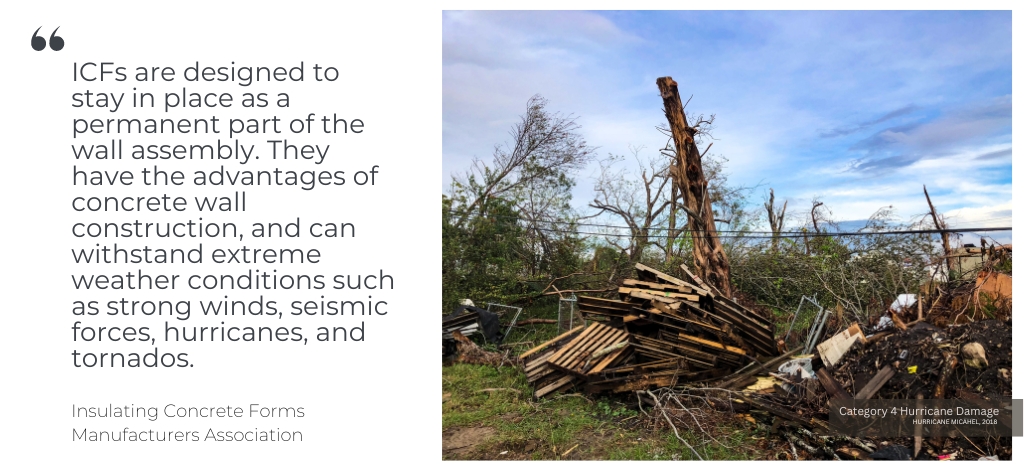
Homes constructed entirely or primarily with reinforced concrete, including walls, roofs, and foundations, are highly resistant to hurricane impacts. Concrete is a robust building material that can withstand the forces and pressures exerted by strong winds and flying debris.
Alternatively, ICF homes use interlocking foam blocks or panels filled with concrete, creating a sturdy and energy-efficient building envelope. They offer excellent resistance to hurricane winds and are less susceptible to severe damage.
For example, a NUDURA ICF home affectionately called Sand Palace survived 155 MPH winds during Hurricane Michael – even as homes around it fell. Learn more about Sand Palace’s construction in this article published by the Insulating Concrete Forms Manufacturers Association.
Stone and Brick Masonry Instead of Wood
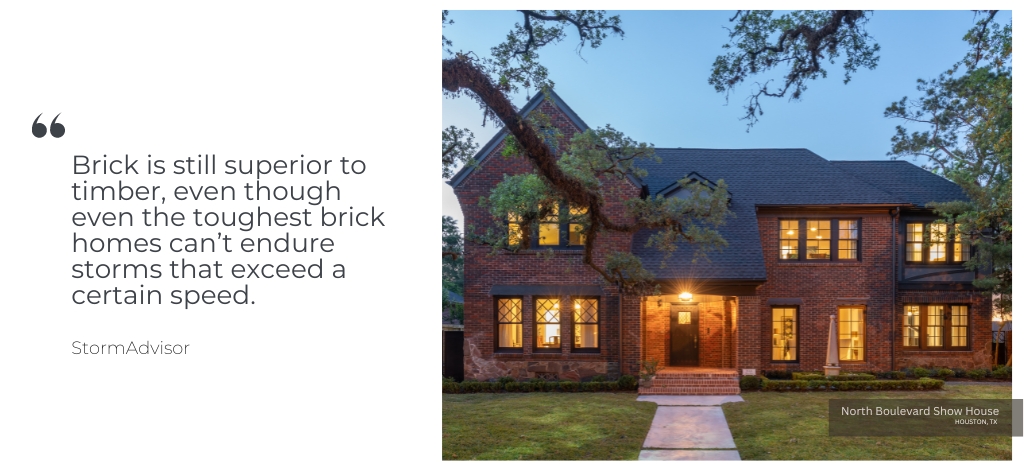
Brick and stone are better equipped to resist the impact of flying debris. However, it’s essential to properly reinforce masonry walls and all windows to ensure adequate protection. According to this resource from Storm Advisor, “regular bricks cannot endure storms that exceed a certain speed…[but] they can survive things like hail, strong winds, wildfires, earthquakes, etc.”
Steel Framing Instead of Wood
The above resource notes that wood can snap, bend, crack, and warp when battered by debris and high winds during a hurricane. On the other hand, homes with steel frames have superior structural integrity and can better withstand high winds and flying debris. They are less susceptible to warping, rot, and termite damage common in wood-framed homes. If your home floods or is otherwise subject to water damage during a hurricane, a steel frame can protect its structure from degrading.
Other Considerations When Building a Hurricane-Resistant Home
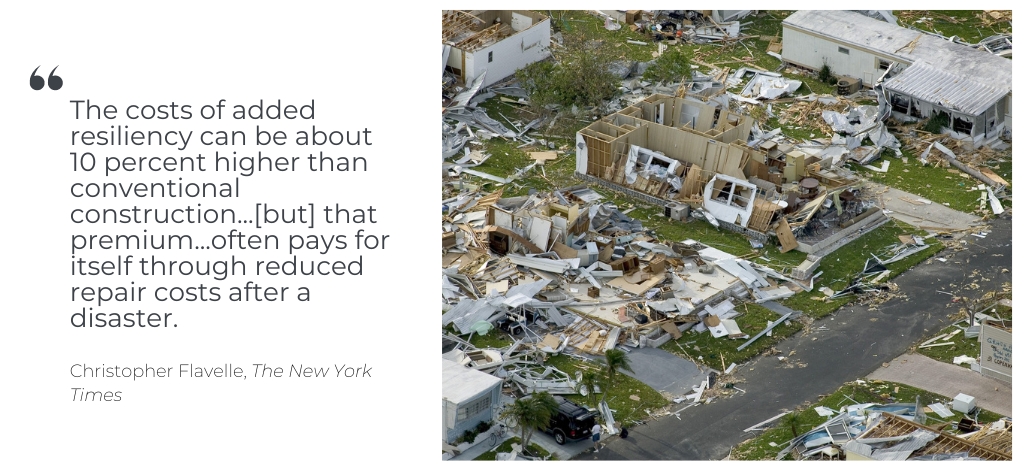
Natural building materials like earthbags and hempcrete are also hurricane-resistant but come with their own challenges – the least of which are current building codes. We must also note that no home can be entirely hurricane-proofed solely through use of appropriate materials. The level of protection against hurricanes will also depend on the specific design, construction quality, and site location of your home.
Bear in mind that resiliency does come with a heftier price tag. According to Christopher Flavelle in an article for The New York Times, “the costs of added resiliency can be about 10 percent higher than conventional construction.” Of course, Flavelle acknowledges that this “premium…often pays for itself through reduced repair costs after a disaster.”
To ensure your home is built or renovated to withstand hurricanes while honoring your budget and aesthetic, consult with a design firm, architects, and structural engineers experienced in hurricane-resistant construction.
Home Hardening Tips for a More Hurricane-Proof Home
In our section about home hardening for tornadoes, wildfires, and other natural disasters, we briefly outlined a few tips for homes built in hurricane risk zones. While an entirely hurricane-proof home is not yet possible, there are many measures you and your design team can take to improve the safety and security of your home. Let’s delve a bit deeper.
#1 Begin by Understanding How Hurricanes Impact Homes
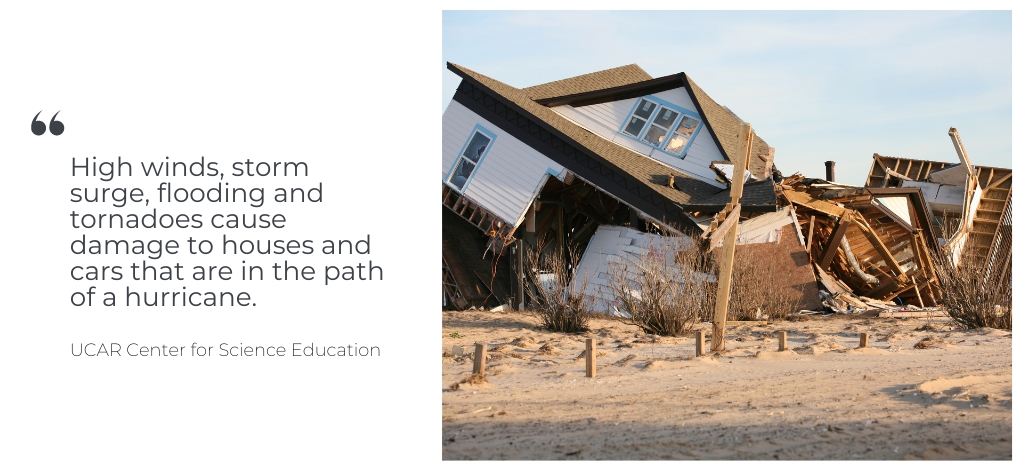
Before taking any measures, it’s essential to understand how hurricane force winds, flooding, and other elements of such storms impact homes. Hurricanes can cause significant damage to homes due to a combination of high winds, storm surges, heavy rainfall, and flying debris.
First, hurricane strength winds can reach speeds of over 74 miles per hour in a Category 1 hurricane and much higher in stronger storms. Such wind pressure can tear off roofs, lift and shift exterior walls, break windows, and damage doors. Winds from hurricanes and tropical storms can also uproot trees and other vegetation, which can turn into flying debris.
Hurricanes can also cause storm surges, which are rises in water level along the coast. Storm surges are the result of strong winds and low atmospheric pressure. As a hurricane moves toward the shore, it can push a massive amount of seawater onto the land. Storm surges can flood homes and cause structural damage – particularly in low-lying areas near the coastline.
Of course, storm surges can lead to widespread flooding in affected coastal areas. Water damage can weaken wooden beams, damage foundations, and so much more. The most detrimental storms not only cause flood damage to property. Flooding can also cause a number of human health issues due to mold, toxic chemicals, and sewage overflow.
Beyond storm surges and high winds, hurricanes along the Gulf Coast can also cause landscape erosion – potentially destabilizing foundations and retaining walls.
#2 Reinforce Windows, Doors, and Walls
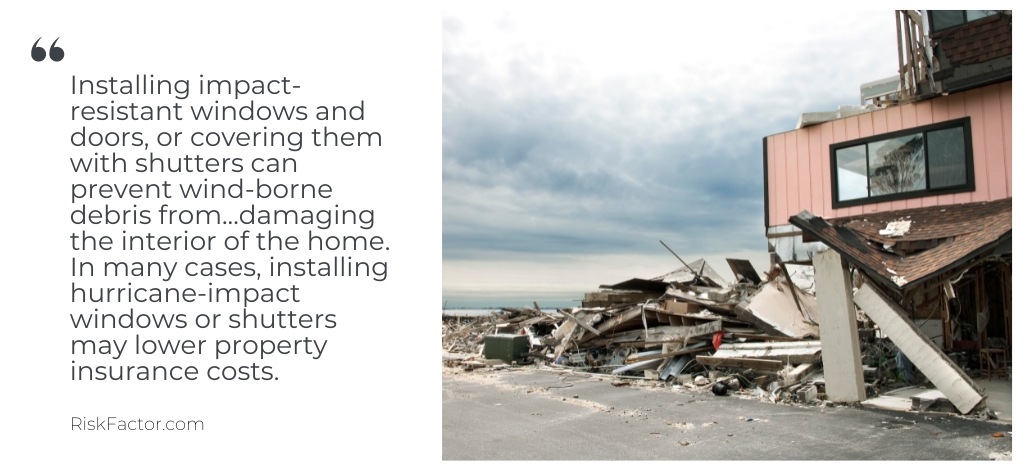
The next step in creating a more hurricane proof house is reinforcing windows, doors, and walls. If possible, consider replacing existing windows and doors with impact-resistant versions. These are designed to withstand the force of flying debris and high winds, reducing the risk of breakage and structural damage. For existing windows you do not plan to replace, add storm shutters and storm doors.
If a hurricane or tropical storm is imminent and you do not have storm shutters or impact-resistant windows and doors, attach plywood panels and window film cut to match the size of each opening. You might also install a door brace or bar to prevent inward movement during high winds.
In addition, experts recommend reinforcing exterior doors with heavy-duty deadbolts and replacing short hinge screws with longer ones. The same applies to garage doors, which are particularly vulnerable during hurricanes.
#3 Strengthen and Secure Your Roof
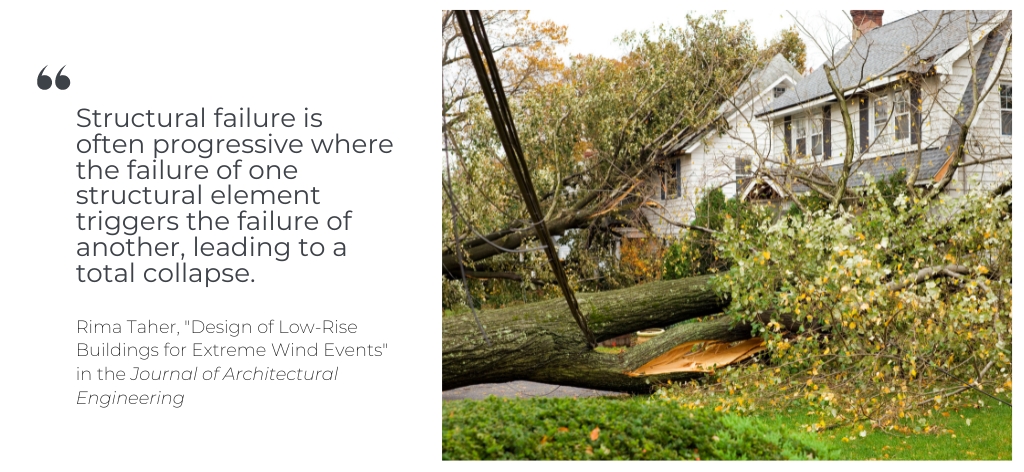
As underscored by NJIT’s Dr. Rima Taher above, hurricanes can negatively impact every level of a home from its foundation to its roof. Before a hurricane lands near your home, storm proof your roof.
Consider adding hurricane straps or clips. Hurricane straps or clips reinforce the connection between roof trusses or rafters and the wall framing. These metal connectors help secure the roof to the rest of the house, making it more resistant to uplift during high winds.
Reinforce vents and gable ends to prevent the roof from being lifted up during a hurricane.
If building a new home or replacing an older roof, opt for thicker roof sheathing, limit the length of roof overhangs, and ask your architect about a hipped design. Have your roof inspected by an expert ahead of hurricane season and follow their recommendations for hurricane resistant features.
#4 Clear Debris and Consult a Landscape Designer to Reduce Risks
Owners of hurricane proof houses do not simply look at the building interior and exterior. They also carefully consider the surrounding landscape. As noted above, it is essential to regularly inspect and maintain your roof and gutters. However, you must also clear debris from vegetation and other objects in your yard that could become airborne during extreme weather conditions.
Trim trees and shrubs around your home to minimize the risk of falling branches and debris during a storm. Move or anchor any outdoor furniture, decorations, or equipment that could become projectiles in high winds. As flooding is common during hurricanes, we recommend consulting a landscape architect to ensure your home’s drainage is up to code. Ask about retaining walls and other hardscaping elements too.
#5 Elevate Electrical and Mechanical Systems
To keep you, your family, and your home safe from electrical shocks and other injuries, Raise electrical outlets, switches, and circuit breakers at least a foot above expected flood levels. Elevate or relocate mechanical systems like heat pumps and AC units above flood levels too. This will also prevent water damage to electrical and mechanical systems. To further protect your family, learn how to shut off gas, water, and electricity when local officials ask you to do so.
#6 Seal All Gaps and Openings
Creating an impermeable building envelope is key to preventing water from entering the home during a hurricane. Use caulk and weather stripping to seal gaps around windows, doors, and any other openings to eliminate water infiltration.
#7 Install a Sump Pump to Manage Flood Waters
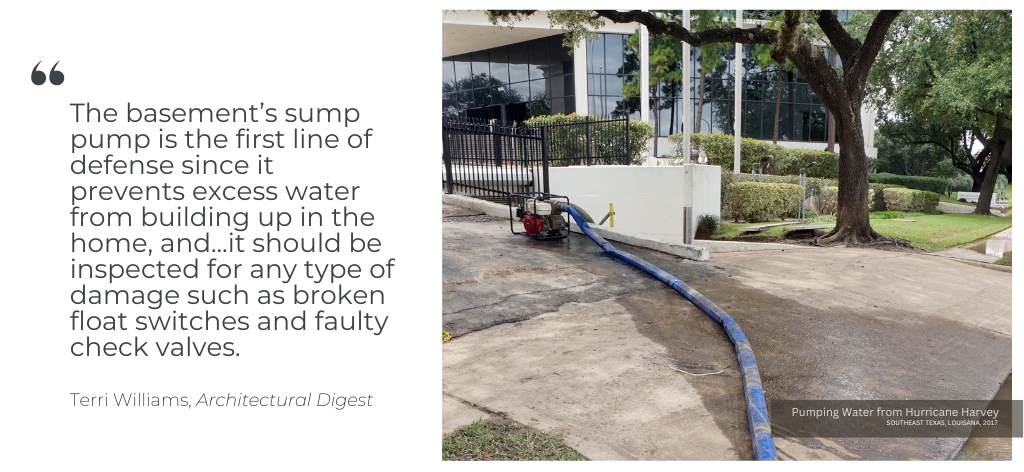
If your home is at severe risk of flooding, you might also consider installing a sump pump in your home’s basement or ground floor. In an article for Architectural Digest, Terri Williams explains that a sump pump in the basement is your home’s “first line of defense since it prevents excess water from building up.”
Before a hurricane hits your neighborhood, Williams recommends having the sump pump serviced. An inspector will check for “broken float switches and faulty check valves” that could cause the sump pump to malfunction during a flood.
#8 Consider Waterproofing or Otherwise Fortifying Your Foundation
Consult with an expert to determine whether fortifying your foundation could help hurricane proof your home. If you live in a hurricane-prone area, reinforcing your home’s foundation might make it more resistant to storm surges and flooding.
Final Thoughts: Creating Hurricane-Resistant Homes in Houston
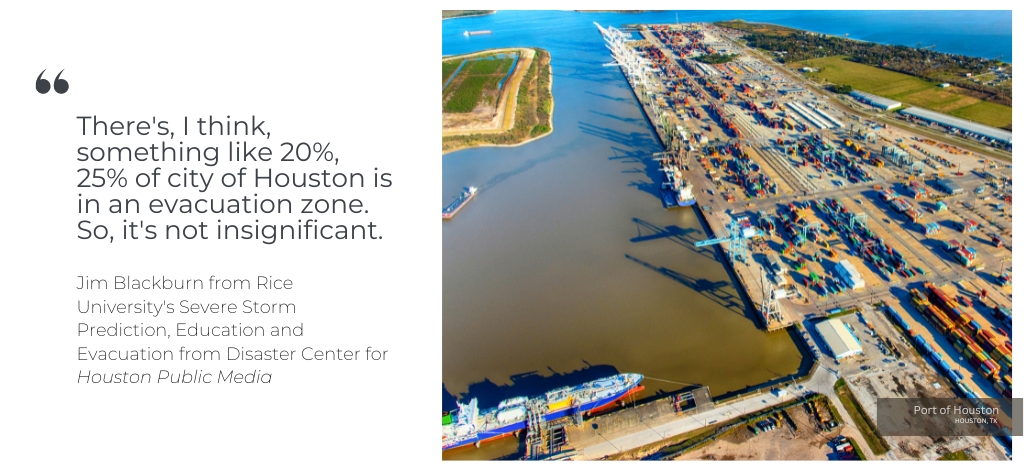
If you have time to prepare before the next hurricane makes landfall, we recommend contacting a team of professionals who can guide you during your renovation or new build. Whether you work with a design team or carry out these home hardening measures on your own, this resource from the National Hurricane Center recommends that you “begin pre-season preparations now.” In addition to undertaking home hardening measures, this means checking your insurance, creating an emergency kit, developing an evacuation plan, and discussing risks with experts.
